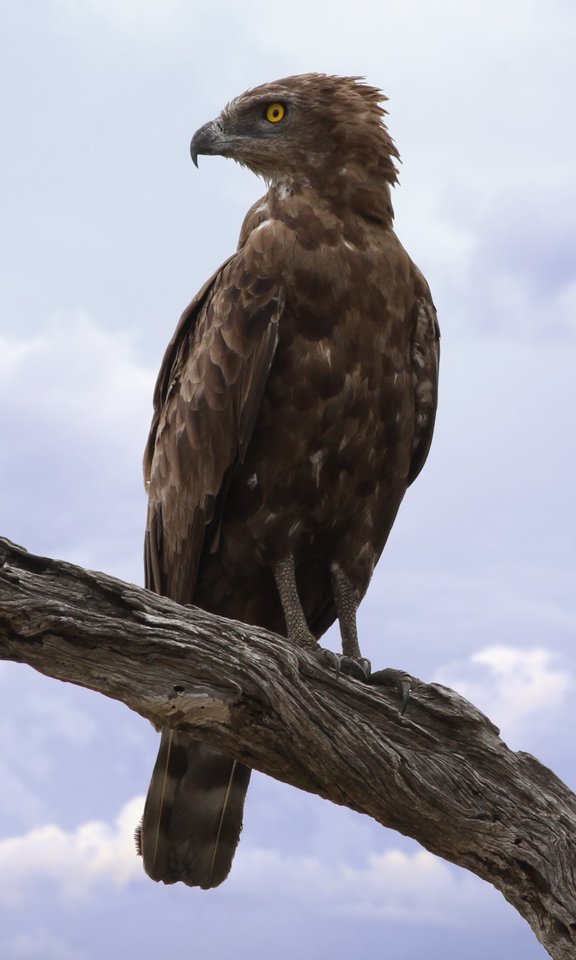The Brown Snake Eagle, scientifically known as Circaetus cinereus, has several adaptations that help it protect itself from potential threats. Its specialized diet, heavily scaled legs, precise hunting technique, and preferred habitat all contribute to its self-defense mechanisms.
Specialized Diet: Venomous Snake Immunity
One of the primary ways the Brown Snake Eagle protects itself is through its diet, which consists mainly of venomous snakes. By specializing in such prey, the eagle develops immunity to various snake toxins, enhancing its survival chances against these dangerous reptiles. This adaptation allows the Brown Snake Eagle to safely hunt and consume its primary food source without the risk of being harmed by the snake’s venom.
Heavily Scaled Legs: Additional Protection
 Image source: Brown snake eagle By Derek Keats
Image source: Brown snake eagle By Derek Keats
The Brown Snake Eagle’s leg scales are another crucial adaptation for self-protection. The bird has heavily scaled tarsi, or legs, which provide an additional layer of protection when hunting venomous snakes. These scales minimize the risk of venomous bites and reduce the likelihood of injury during encounters with potentially dangerous prey.
Precise Hunting Technique: Minimizing Risks
The Brown Snake Eagle’s hunting technique also plays a significant role in its self-protection. It typically perches in a tall or exposed tree or on an electricity pylon, scanning the surroundings for prey. When it spots a snake, it glides down and attacks with its strong feet and toes, often targeting the head of the snake to kill it instantly. This swift and precise hunting method reduces the risk of the eagle being bitten or harmed by its prey.
Preferred Habitat: Increased Cover and Protection
The Brown Snake Eagle’s habitat preferences contribute to its self-protection as well. It tends to avoid more arid steppe and grassland habitats, preferring dry woodlands and thorn and broad-leafed savannas. These habitats offer more cover and protection for the eagle, making it less vulnerable to predators and other threats.
Adaptations for Survival
The Brown Snake Eagle’s adaptations for self-protection are a testament to its evolutionary resilience. By developing specialized traits, the eagle has found ways to thrive in its environment and minimize the risks it faces from potential threats. These adaptations, combined with its hunting prowess and habitat preferences, allow the Brown Snake Eagle to successfully navigate its ecosystem and ensure its continued survival.
Conclusion
In conclusion, the Brown Snake Eagle’s self-protection mechanisms are a fascinating example of how species have evolved to adapt to their surroundings. From its specialized diet and heavily scaled legs to its precise hunting technique and preferred habitat, the eagle has developed a range of adaptations that enable it to thrive in its environment and safeguard its well-being. By understanding these unique characteristics, we can gain a deeper appreciation for the remarkable resilience and survival strategies of this remarkable bird of prey.
References:
– The Peregrine Fund – Brown Snake Eagle
– Wikipedia – Crowned Eagle
– Footsteps in the Gambia – Beaudouin’s Snake Eagle
– Oiseaux-Birds – Short-toed Snake Eagle

